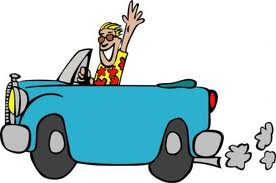California has an “implied consent” rule regarding chemical testing that is found in Vehicle Code Section 23612. This vehicle code section states, “Any person who drives a motor vehicle is deemed to have given his or her consent to chemical testing of his or her blood or breath for the purposes of determining the alcoholic content of his or her blood if lawfully arrested for an alleged DUI.”
When a person is arrested for drunk driving, they are given a choice between a blood or breath test. If a person refuses to give either sample, The Department of Motor Vehicles (DMV) will suspend or revoke a person’s driving privileges pursuant to California Vehicle Code Section 13352. The period of that suspension or revocation is at least one year.
In addition to the repercussions in the administrative DMV phase of a DUI case for a refusal, there are also increased penalties in the criminal court process.
Law enforcement cannot obtain a person’s blood without consent unless they have a warrant to do so. Failure to have a warrant constitutes a Fourth Amendment violation. Regardless, San Diego and other California law enforcement agencies have been forcibly taking blood from drivers without a warrant, citing the landmark case from 1966, Schmerber v. California. In that case, the court held police can, without a warrant, forcibly obtain a person’s blood for the purpose of chemical testing to determine intoxication after a lawful arrest if the sample is taken in a reasonable, medically approved manner, there is a reasonable belief that the person is intoxicated, and there is a need for prompt testing because the person’s blood alcohol is diminishing.
However, in April 2013, the United States Supreme Court ruled on this issue in Missouri v. McNeely. In this case, the Court ruled that a warrantless search of a person is reasonable only if it falls within an exception. The Court did not find any exceptions for exigency existed just because blood alcohol evidence is inherently evanescent.
Although the Court did not create a per se rule, it did state, “When officers in drunk-driving investigations can reasonably obtain a warrant before having a blood sample drawn without significantly undermining the efficacy of the search, the Fourth Amendment mandates that they do so.”
The opinion also commented how much more expeditiously warrant processing is 47 years after Schmerber, and that exigency is determined on a case-by-case basis.
Since no bright line rule was created in this opinion regarding when the police can forcibly take blood from someone who was lawfully arrested, suspected of drunk driving, this issue will remain one that is heavily litigated.
If you have had a forced blood draw without a warrant, contact a criminal defense attorney who specifically handles driving under the influence cases. If there is a valid argument that your constitutional rights have been violated, a motion to suppress this evidence may be filed and ultimately, the prosecutor may not be able to use the results against you in court.
 San Diego DUI Lawyers Blog
San Diego DUI Lawyers Blog


 In addition to being inexperienced drinkers, they are also inexperienced drivers. Adding alcohol to the mix can lead to car accidents, bodily injury, property damage, the loss of their driving privileges, driving under the influence charges with fines, fees and a criminal record, and worse, possibly deadly consequences for the driver, the passengers, pedestrians, and other drivers.
In addition to being inexperienced drinkers, they are also inexperienced drivers. Adding alcohol to the mix can lead to car accidents, bodily injury, property damage, the loss of their driving privileges, driving under the influence charges with fines, fees and a criminal record, and worse, possibly deadly consequences for the driver, the passengers, pedestrians, and other drivers. San Diego Police Sergeant John Iammarino, Detective Daniel Caropreso, Sergeant William Brown, and Sergeant Christopher Tivanian are all assigned to desk duty as the San Diego City Attorney’s Office investigates their involvement in a
San Diego Police Sergeant John Iammarino, Detective Daniel Caropreso, Sergeant William Brown, and Sergeant Christopher Tivanian are all assigned to desk duty as the San Diego City Attorney’s Office investigates their involvement in a  In California, the
In California, the